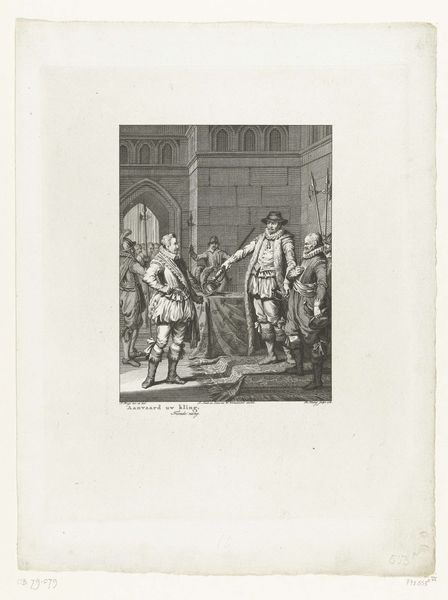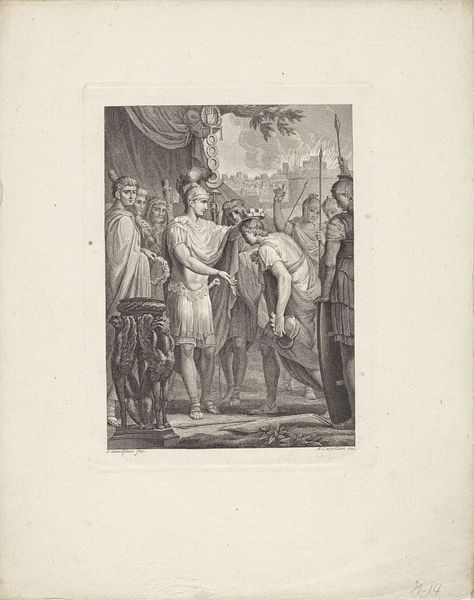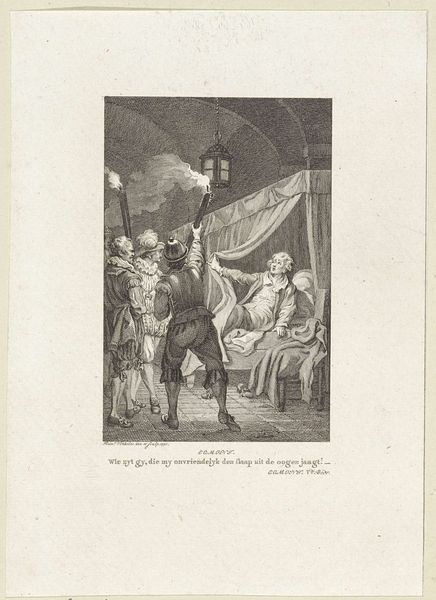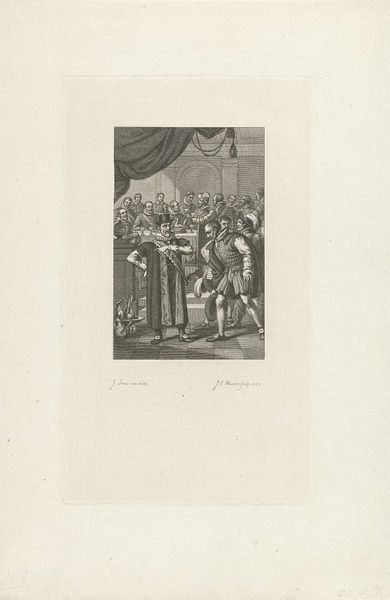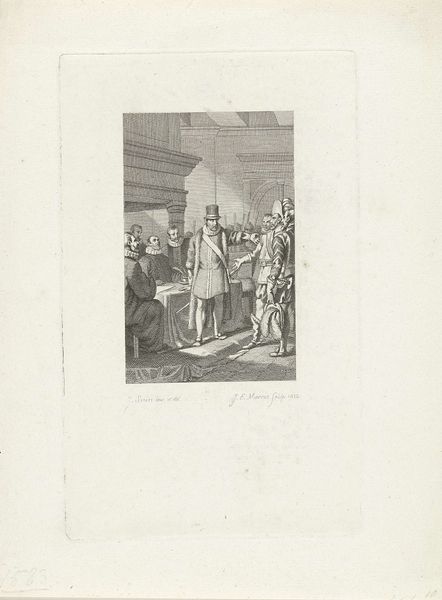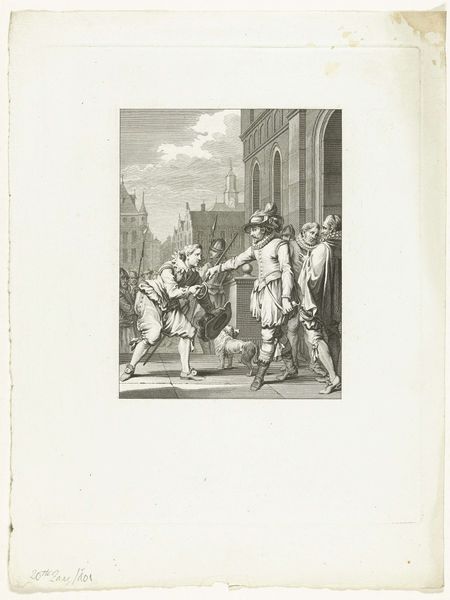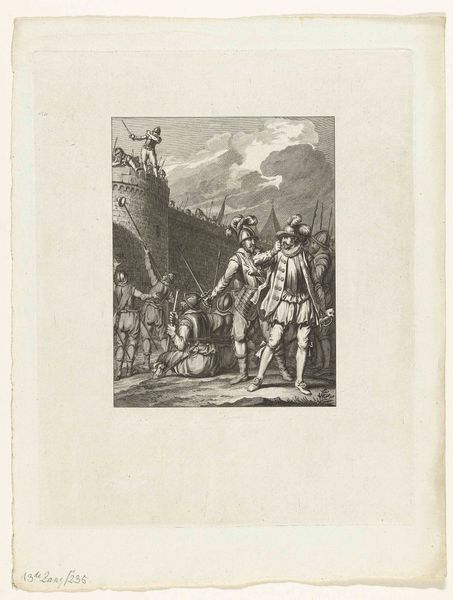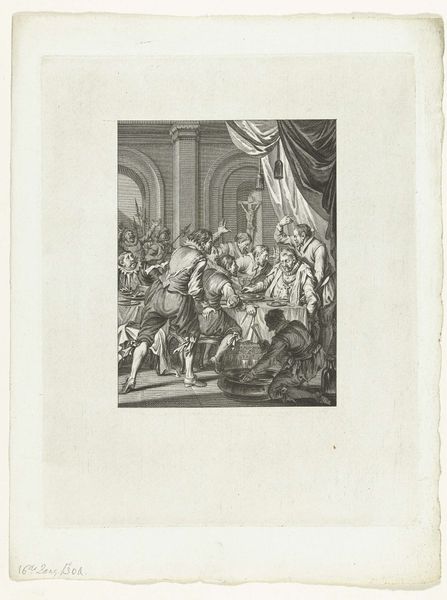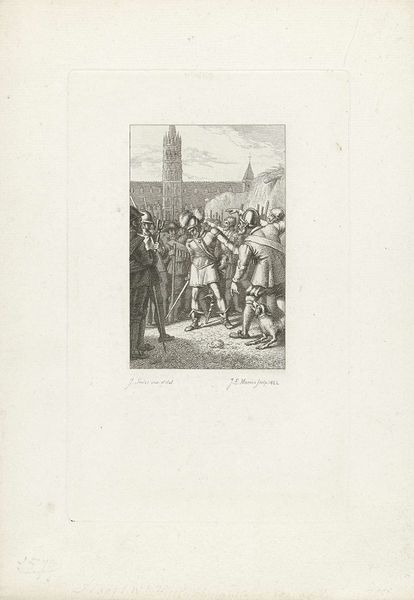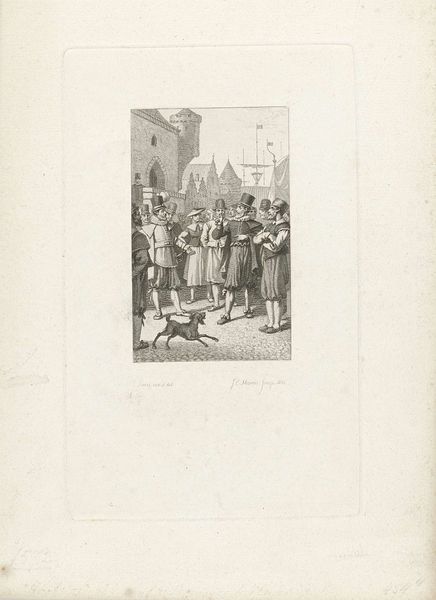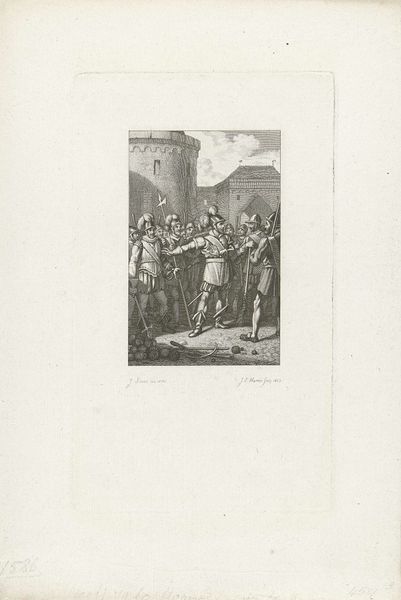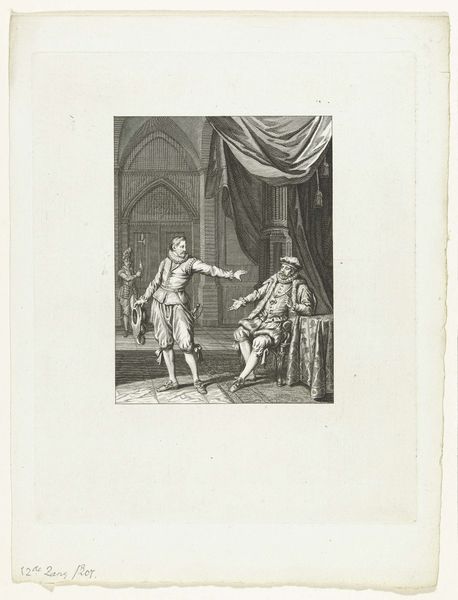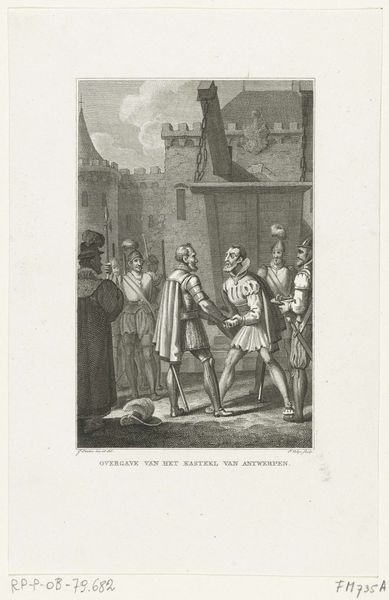
#
pencil drawn
#
light pencil work
#
photo restoration
#
pencil sketch
#
light coloured
#
old engraving style
#
personal sketchbook
#
ink colored
#
sketchbook drawing
#
pencil work
Dimensions: height 238 mm, width 145 mm
Copyright: Rijks Museum: Open Domain
Curator: Jacob Ernst Marcus created this image entitled "Gevangenneming van graaf van Egmond, 1568," in 1821. It’s currently held in the collection of the Rijksmuseum. Editor: Immediately, the starkness strikes me. There's an almost palpable tension despite the softness of the pencil work. Curator: This piece depicts a significant historical moment, the capture of the Count of Egmond. The Count was a nobleman in the Spanish Netherlands. He was arrested under the order of the Duke of Alba for treason, contributing to the growing Dutch revolt. Its creation falls within a politically charged period, no doubt seeking to influence perceptions of power and Dutch identity. Editor: Yes, and if you look at the swords—the upright one held by the guard pointing downwards and crossing paths with the other pointed straight, horizontally, toward the Count—it’s such a pointed gesture of accusation. One feels his vulnerability so clearly here. Curator: Absolutely. The composition really drives home that narrative. Note the details in the guard's attire—every feather and bit of armor meticulously rendered, speaking to the authority and military might arrayed against Egmond. This could be considered an expression of growing nationalist sentiment in the Netherlands, painted shortly after the end of French rule and during a period of re-evaluating Dutch history and heroes. Editor: What do you think of the light work on the Count, which gives a real aura of refinement that sets him apart. One would think the attire and accoutrements of war would carry more visual impact, but it seems all centered on this one figure who is marked out. It highlights, perhaps, the symbolic importance of such leaders in a national identity that sought freedom and independence from oppressors. Curator: You know, your observations lead me to consider how Marcus navigated depicting what would then be a very touchy subject in art. The careful, almost neutral presentation softens it, suggesting perhaps some constraints, both political and commercial, faced by artists when producing such material for public audiences. It served to commemorate Egmond while walking a thin line politically during a time when Dutch identity was actively being shaped. Editor: It’s amazing how one artist can compress such potent ideas into a sketch. I feel that I come closer to grasping what it must have felt like to live through such an era simply by viewing it. Curator: Indeed. Art always is the meeting point between emotion and knowledge.
Comments
No comments
Be the first to comment and join the conversation on the ultimate creative platform.
